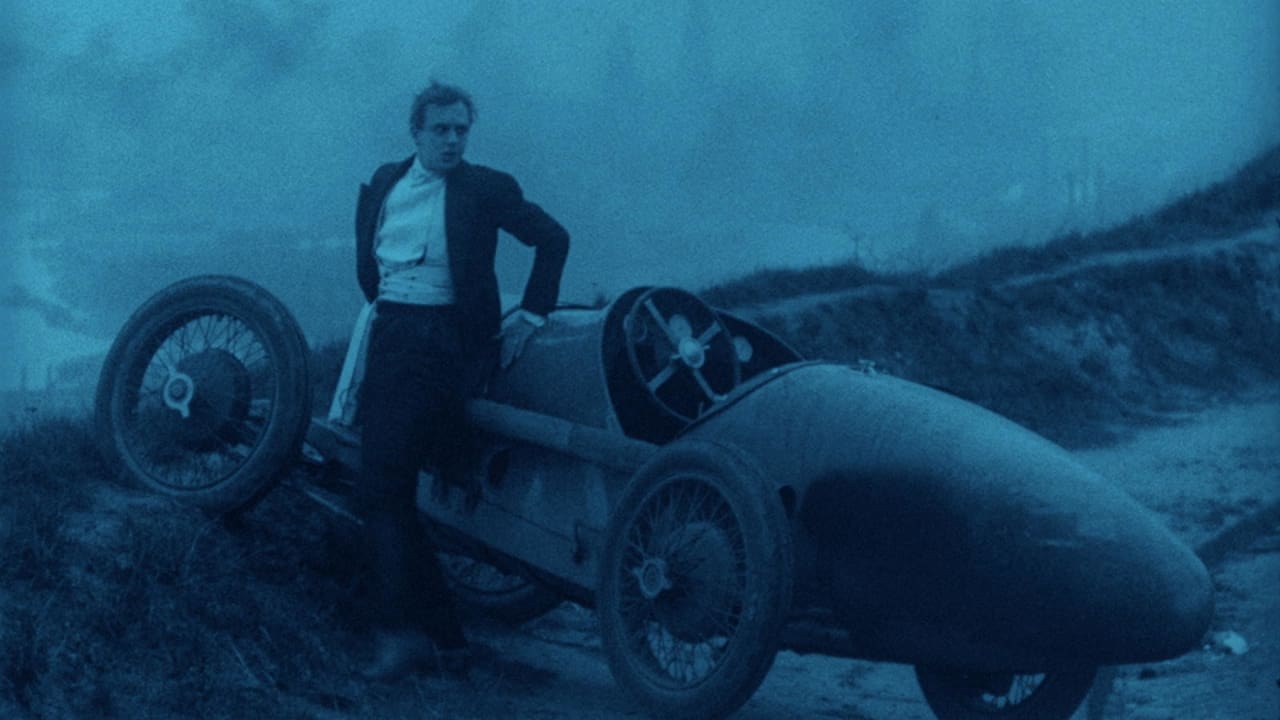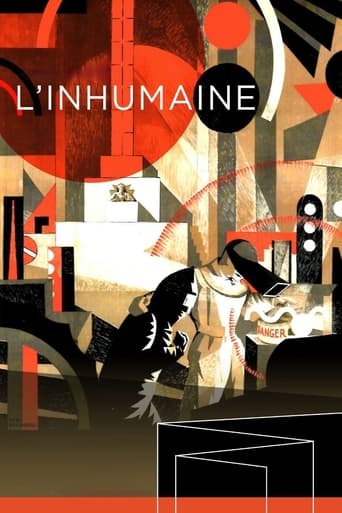

The eye in motion, usually emblematic as a subjective shot from a speeding car; this has been at the center of this first great French tradition in film. Which is to say, a fleeting glimpse, the opening-up of the point of view from its fixed, static place in history and time to encompass a new, exciting view of life hitherto impossible; a mobility on the whole in all directions of perception, with finally the visibility of soul as the utmost aim.Two scenes here really take the breath away, both pertaining to the distinctions, and ultimately the inseparability, of reality and art, performance and life, external and internal image.The first takes place on the stage. The theater at Champs Elysee is packed full with an audience who have gathered to satisfy their morbid curiosity at the scandalous woman - a singer - who is about to appear; so everyone in the auditorium is at the grip of paroxysm not at the prospect of the anticipated performance, the stylized image, the evocative art, but the flesh and blood woman, the reality behind - again though a reality rumored from mouth to mouth, or read from the gossip column of a newspaper. So even before she has had the chance to sing, at the mere sight of her, the place is already in chaotic uproar - everyone wildly gesticulating, booing, others clapping and cheering on - already deeply affected, but unwittingly by another image - the immoral, scandalous woman - which they have projected upon her. And then she sings, and everyone pipes down.(a prelude to this image-within-an-image, or behind it, is the opening act of a dancing troupe; we see them dance, while on the backdrop behind them are painted figures of dancers, and when the curtain falls, it's again painted with dancers).The other powerful scene, involves the apparition of a young man thought to have died in a horrible car accident. Moments earlier we had been in the crypt with the dead body, a wind rustled the curtains, a gramophone played presumably eerie music. So, again a performance outwitting the performer, with reality - the kind of which you read from the obituaries in a newspaper, and hence the official, public reality - revealed by art as this unreliable facsimile of hearsay and conjecture.As with more famous American filmmakers - DW Griffith, Chaplin - it is this institutionalized, hypocritically objective 'humanity' that threatens to destroy the passionate, living individual who can barely make his own intentions known to himself; here it is the leader of some fund for the betterment of humanity who, having been turned away by the woman at a gala, scornfully turns against her.Purely in terms of images though, you will want to see a scene where - through the use of a 'scientific' device - we are quite literally transported on the lives of people by a singing voice. We steal upon them through a screen.This is how the filmmaker - who permits our vision to wander - was considered at the time then, as is also evident from theoretical writings of the time; a 'wizard' of science, as the intertitle informs us.And then the final reel. It is suddenly like Frankenstein's laboratory - full of mysterious futuristic machinery, whizzing with sparks of electricity - animated by bunraku play puppeteers. Figures dressed in black rushing everywhere, rapid-fire montage of faces, pistons, levers, jolts of energy, chaotic but coordinated movement in all directions. I've said it elsewhere about the advent of sound; cinema just wasn't going to be as adventurous, as audaciously freewheeling, freeform, freejazz and ahead of itself, for the next thirty years.Mostly everything takes place in some fanciful cubist sets, it's the first thing to note I guess, which you may want to see if you're interested in carpentry. But with such marvelous cinema on display, it's merely a footnote.
... View MoreWith Marcel L'Herbier's L'Inhumaine, whose sets were designed by Robert Mallet-Stevens, Alberto Cavalcanti, Fernand Leger, and Claude Autant-Lara, architecture became a supreme screen of sets. Concerned with modern ornament, L'Inhumaine would synthesize the design aesthetic of the 1925 Exposition Internationale des Arts Decoratifs et Industriels Modernes, for all who worked on this film (including Paul Poiret, who did the fashions) came to define avant-garde design at the Exposition in the following year. The architect Mallet-Stevens, who designed the pavilion of tourism at the Exposition, was the theoretician of the film set. In his writing on decor, he conceived the set of a film as a work of draftsmanship and a working drawing. He was particularly concerned with rendering hap-tic volumetric(s) and depth and emphasized aesthetic techniques of relief in the design of filmic decor.L'Inhumaine, a film that turned the architect Adolf Loos into an enthusiastic film critic, opens with an industrial vista of Paris as displayed from the "moderne" villa of Mallet-Stevens. This house is inhabited by "the inhuman one" a woman. Georgette Leblanc, who conceived the idea for the film, plays Claire Lescot. She is a soprano who presides over an international salon of men, hosting dinner parties served by masked waiters in an inner patio that resembles a refashioned impluvium. This particular set was designed by Cavalcanti, who, in his own Rien que les beures, would constantly return to the theme of food, conceiving the urban rhythm as its own metabolic matter.Claire's salon is frequented by two suitors who battle of her affection. The engineer, Einat, ends up winning he love by showing her the workings of his very modern "cabinet of curiosity." Claire delights in the marvels of this laboratory (deigned by Leger), in which she can futuristic-ally watch her audiences on a screen just as they are able to hear her sing. As the inter-titles suggest, "she voyages in space without moving," reaching visions of artists in their studios, partaking of the bustling life on the street, and following people driving cars and riding trains. In this way, she lives "through the joy and the pain of human beings." No wonder her other suitor becomes jealous and poisons her.But Einar's laboratory contains residual traces of its genealogy: it can perform alchemy. What is more, it is outfitted with an extra chamber, equipped with a mechanism for reviving the dead. This lab of transformation becomes activated in a sequence that resonates with Fritz Lang's Metropolis. With superimposition's and rapid montage, the laboratory offers what the inter-titles call "a symphony of labor," which brings our voyage-use back to life and to the liveliness of her urban salon.The film was made by L'Herbier's own production company, who deliberately chose an awkward science fiction plot in which L'Inhumaine serves as the pretext for some virtuoso displays of cinematographic virtuosity, and as the narrative justification for some remarkable decors. The sets are a microcosm of the whole film: they are in very different styles, and going from one to the next produces an almost physical shock. The film was very poorly received, both by critics and by the public, and one can see why. It is arguably the first great example in the narrative cinema of the so-called post modernist aesthetic. For the coherence of a stable fictional world with suitably "round" characters who undergo various experiences, L'Inhumaine substitutes a fundamentally incoherent world of pastiche, parody, and quotation. Its flat characters provide no stability; they are but puppets in the hands of an unpredictable, perhaps even mad storyteller. The film uses many devices from the stylistic repertoire of cinematic impressionism, but rather than amplifying and explicating the narrative, they serve instead to call it into question.
... View MoreGoerge Antheil, in his autobiography "Bad Boy of Music," claims that the concert riot scene is actual footage of his own October 4, 1923 concert at the Théâtre Champs Elysées. This event helped seal his reputation as one of the leading modernists of the day. If this is true, then actual artistic history was made because of a reaction at least partially staged for the making of this movie. Among the luminaries present -- and possibly visible -- are Eric Satie (looking like a "beneficent elderly goat") and Darius Milhaud. A few days later, Antheil announced that he was looking for a motion-picture accompaniment to his Ballet Mécanique, a call answered by Fernand Leger.
... View MoreIt is hard for film buffs today to see silent cinema as a modern art. What strikes us nowadays is the immense debt that DW Griffith owes to Victorian fiction, that FW Murnau owes to Romantic painting, that Fritz Lang (and this is true even in Metropolis) owes to ancient German myth. How strange and wonderful then, to see a silent film that owes no debt to anything or anybody, that sums up the notion of 'modernity' in a way no work of art had done before - and precious few have done ever since. Eighty years on from its catastrophic release, Marcel L'Herbier's 1924 masterpiece L'Inhumaine remains the first, perhaps the only, totally modern film.Most famous, of course, are the sets. A Cubist and Art Deco fantasy world designed by the artist Fernand Leger. Whether it's the salon of seductive chanteuse Claire Lescot (Georgette Leblanc) - a dining table afloat on an indoor pool, servants hidden by perpetually smiling masks -or the laboratory of visionary inventor Einar Norsen (Jacque Catelain) -vast and potentially lethal electronic gadgets, assistants in black leather fetish gear - we have entered a world where the past might never have existed, where the future can only be a continuation of now.Just as striking, though, is L'Inhumaine's 'emotional modernism'. While so much silent film acting makes us laugh at its melodramatic excess, Claire and her circle of admirers underplay their emotions as coolly as the high-fashion zombies in Last Year at Marienbad by Alain Resnais. (A fervent admirer of L'Herbier, Resnais has acknowledged the influence of L'Inhumaine on his own work, though he insists that "its ambition is more impressive than its achievement.") Leblanc and Catelain make a gorgeously impassive pair of lovers. Hieratic icons for an age whose one true god is the Image.David Melville
... View More